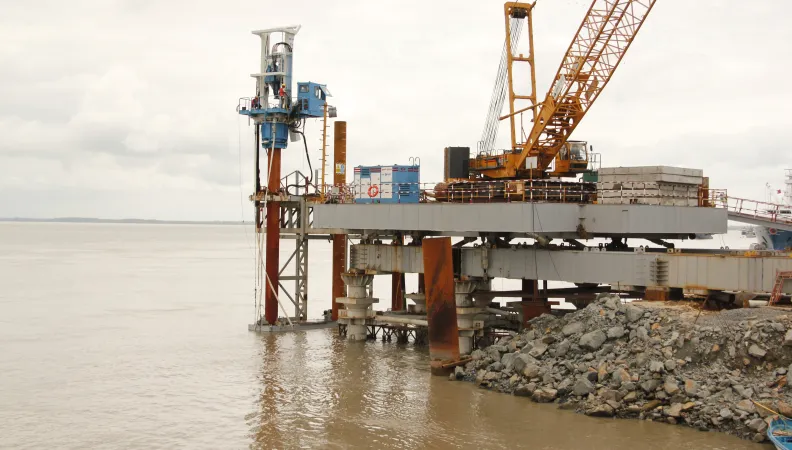Share the page
DPW Posorja: A loan for a new port terminal in Ecuador
Project


-
Signature date
-
-
Location
-
Ecuador
-
Financing tool
-
Financing amount (Euro)
-
43859649.12
-
Financing details
-
USD 50m loan
-
Customer
-
DPWORLD Posorja S.A
-
Type of customer
-
Company
-
Country of headquarters
-
Ecuador
-
Project number
-
PEC1015
-
Environmental and social ranking
-
A
The USD 50m loan will finance a new deepwater port terminal in the region of Guayaquil, the economic capital of Ecuador. It will be a port of entry for high-capacity ships and will improve the competitiveness of agrifood export sectors, which boost the country’s economy.
Client presentation
78% of DPWorld Posorja S.A. is held by the international port operator DP World and 22% by the local conglomerate Nobis. It will be developing, building and operating a new port terminal in the region of Guayaquil, the economic capital of Ecuador, under a 50-year concession granted by the Port Authority.
Project description
The project involves building a new port terminal with an initial annual capacity of 800,000 containers (TEU).
Project impact
This project will make a positive contribution to:
- employment, with over 1,000 jobs, including several hundred during the port construction phase
- government revenue
- improving infrastructure and
- the transfer of the expertise of a major global operator.
With the global increase in the size of ships, this new more efficient infrastructure will provide Ecuador with a port of entry for ships with a capacity of over 10,000 containers (TEU). This will allow the country to fully integrate international trade networks and will contribute to the competitiveness of agrifood export sectors, which drive the national economy.
This port project, by its very nature, also contributes to reducing the carbon emissions of maritime transport, by providing new deepwater port infrastructure. This will relieve existing ports in the region, which are almost at congestion point. It will also (i) accommodate larger vessels, which are more efficient in terms of the ratio of energy consumption to the quantity of goods transported, and (ii) optimize journeys on shipping routes transiting through Ecuador.


